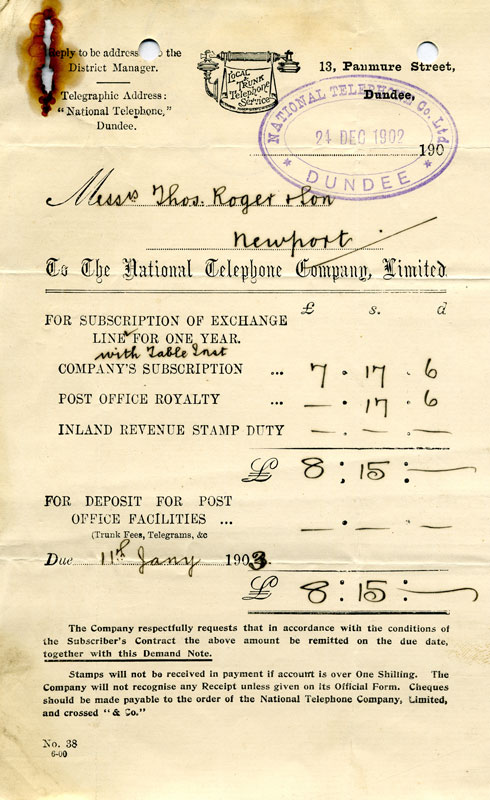The wee place where I started life
In bonnie Newport town in Fife
How often roamed, in boyhood days
Its pebbled beach and grassy braes,
Though now past three score years and ten
In dreams I linger there again.
And see once more that grocer’s shop
Where business kept me on the hop;
Those friendly customers of old
Bring memories worth more than gold.
The schoolday haunts are with me still
Old James’ Square and Gowrie Hill,
The granary that used to rear,
Above the ancient ruined pier,
The Knowie too and Charlie’s Wood,
Where ‘Tarzan’ romped with ‘Robin Hood’.
Some names that strangers spoke with awe –
Like Washer Willie’s, Pluck the Craw,
Eelscraig Rock and Twinkletree –
A croft forever dear to me —
The gaslit streets of long ago,
The shops with Christmas cheer aglow,
The Sunday School, so fresh and clean,
The broad Tay and its shining scene.
Cruel progress keeps bulldozing on,
And many landmarks sadly gone
Remind me of them in the past,
With memories held true and fast,
So dear old home town, prosper yet –
Your charm I never shall forget.
Anon.
I make no apologies for using this old poem which is already on the site. It says so much about memories and childhood times in the old ‘village’. Although ‘Anon’, there may be possible clues about its author within it.
A note on locations for non-natives:
- James’ Square is the block on the corners of King Street, Gowrie Street and Queen Street;
- Gowrie Hill is the wood between Queen Street and Craighead;
- The Knowies are south of the railway, behind Elizabeth Crescent (See comment. Thanks, Margaret);
- Charlie’s Wood – I am not aware of;
- Washer Willie’s is on the back road to Tayport;
- Pluck the Craw is on the waterside at the foot of Castle Brae;
- Eelscraig Rock is the rock on the beach at the bottom of William Street, not to be confused with the ‘Big Rock’ which was at the foot of Robert Street;
- Twinkletree is in the fields east of the road to St. Andrews, between Forgan roundabout and Forgan Church (I was told that it had burned down after a lightning strike, but I’m not too sure of the truth of this) – the garden walls and trees are still there.

